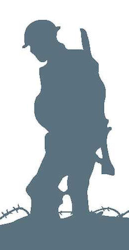Name
George Buckett
Conflict
First World War
Date of Death / Age
Rank, Service Number & Service Details
Royal Engineers
Railway and Canal Troops
Awards: Service Medals/Honour Awards
Cemetery/Memorial: Name/Reference/Country
Headstone Inscription
Not Researched
UK & Other Memorials
Pirton School Memorial
Pre War
Biography
George appears on the School War Memorial, confirming that he attended the school. School records indicate that he was admitted in 1899 and that his father was Albert Buckett. The 1911 census adds that he was the grandson of Frederick and Eliza Buckett, and that he and two siblings, Lizzie and Bertram, were to be living with them. All three children: George (b c1894), Lizzie (b c1893) and Bertram (b c1900), were born in Finsbury Park, London. It appears that his brother Bertram also served and survived. Before the war George worked as a farm labourer.
He married Eva Rose Bunyan on September 23rd 1914 and they had a son, Francis George who was born in February 1915. On June 7th 1916, when George was twenty-two years old he went to Hitchin and enlisted in the Royal Engineers, Railway and Canal Troops. His service record shows that he was living near The Fox and working as a platelayer for the GNR (Great Northern Railway) at the time. He was mobilised in December 1916 and left for France as Sapper 218018, 119th Rly. Co. (Railway Company), Royal Engineers on January 18th 1917. He would have been working to maintain the railway lines to keep the troops and supplies moving. On March 25th 1917 he was admitted to hospital, although the reason is unclear. A copy of a death certificate held in George’s records confirms that his son died from a ‘convulsion’ on March 23rd 1917, aged two - just two days before George was admitted to hospital. One wonders if he had been told and whether this was connected in some way. He rejoined his unit on April 1st only to be admitted again on the 24th for four days. Later that year on October 2nd he was back in hospital for the third time and remained in one hospital or another until November 28th. In 1918 between July 9th and 17th he was in hospital yet again. All these dates are recorded in the ‘Date of Casualty’ column of his records, but it is not clear whether these admissions were through illness, injury or being wounded.
He was awarded a good conduct badge in December 1918, dispatched to England late in October 1919 and was granted twenty-eight days furlough. So he must have been demobilised after that date.
Acknowledgments
Text from the book ‘The Pride of Pirton’ by Jonty Wild, Tony French & Chris Ryan used with author's permission



